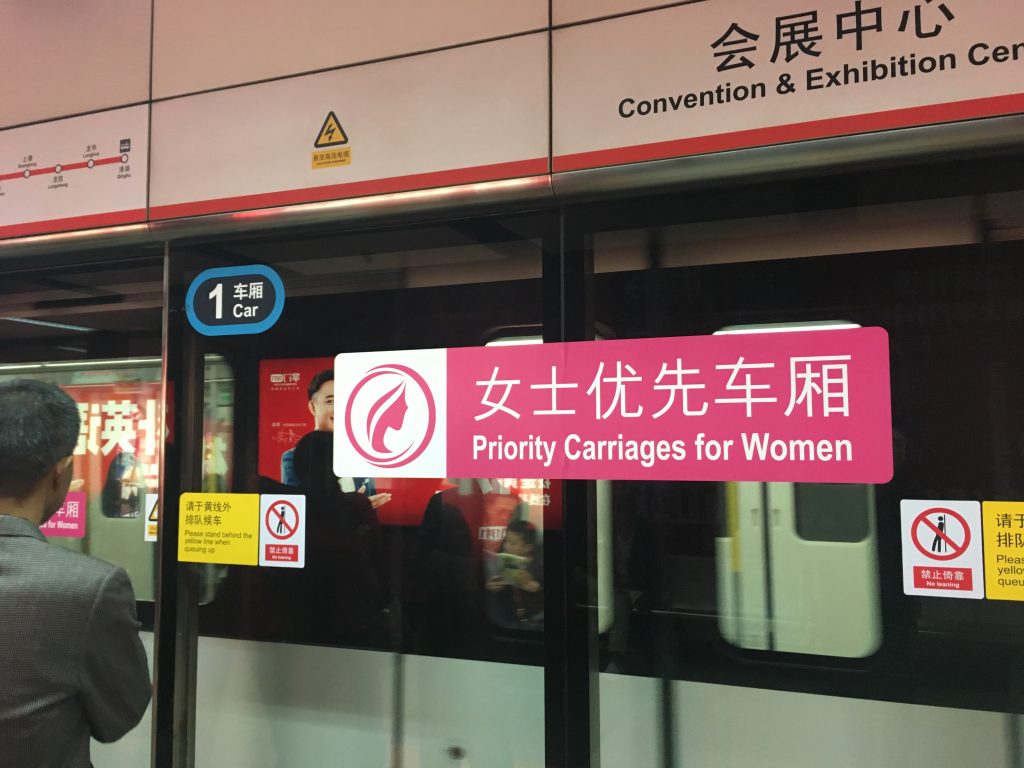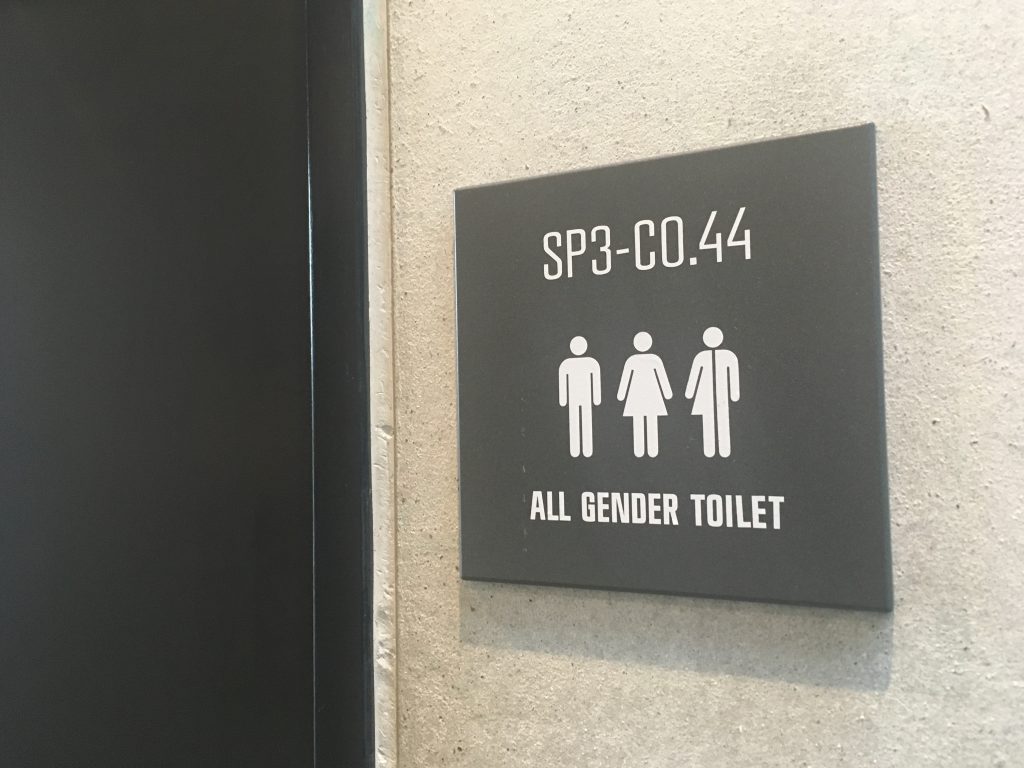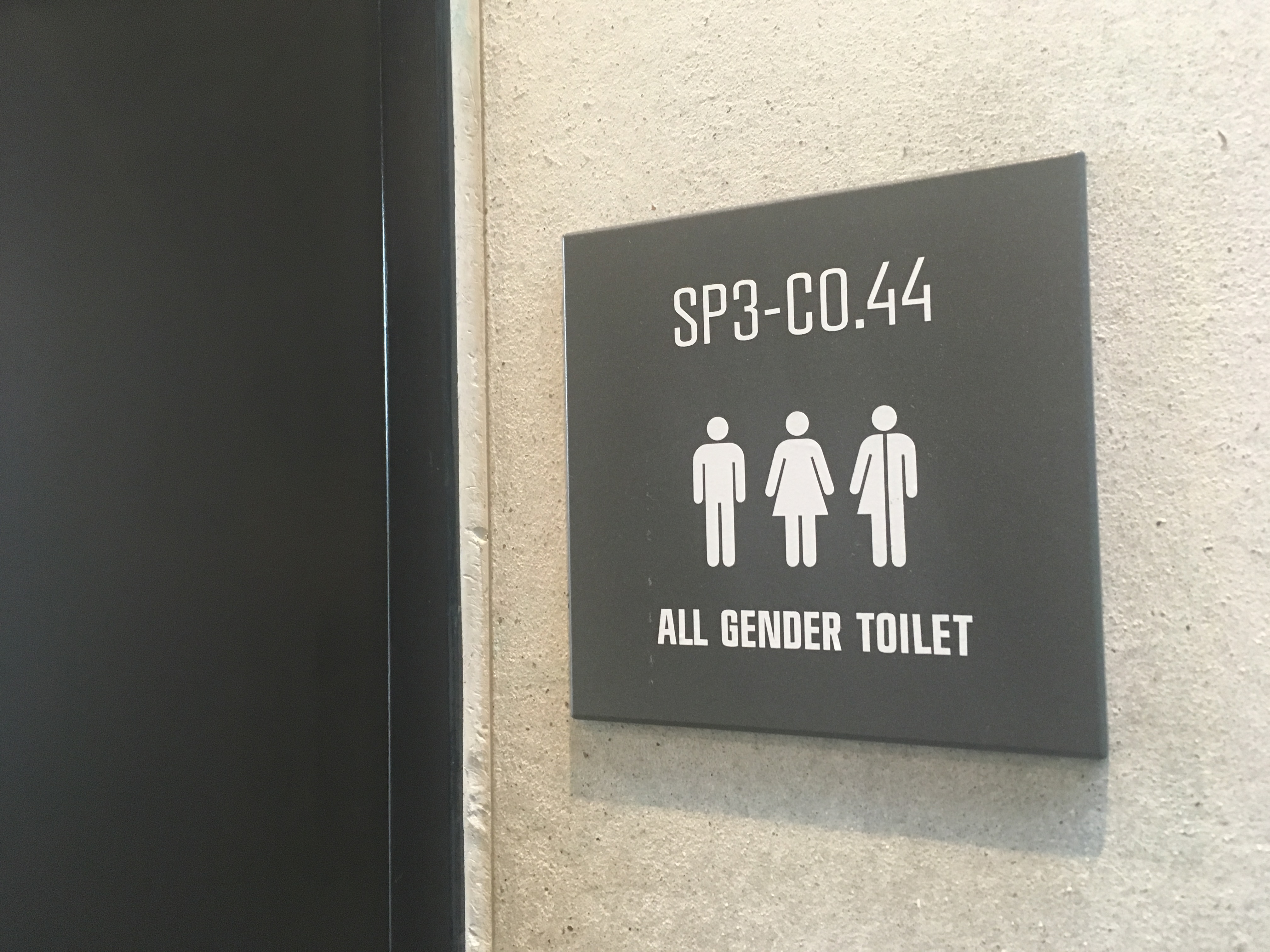Women only subway cars are available in Shenzhen, China. They are also found in Cairo, Rio de Janeiro, Mexico city, Tokyo, Delhi, Jakarta, and Kuala Lumpur. However, priority carriages for women receive mixed reactions. According to the Wikipedia,
… Women cited safety from gropers, as well as not having to tolerate various smells. Men cited not having to worry about false accusations of being a groper. However, passengers complained about further overcrowding in mixed cars, and feared that women who ride mixed cars would be putting themselves at more risk than before (Japan)
… Women-only compartments were introduced on the Leipzig-to-Chemnitz regional train in 2016. Reactions from passengers were mixed. While some welcomed the measure as it made women feel safer, others thought that separating genders was “something from the past” and a “backward solution” (Germany)

To quarantine women from men aims to protect female passengers from male criminals. However, to do so *accentuates* gender differences. Claire Cohen wrote at Telegraph,
… Women-only carriages are an admission of defeat; they normalise sexual assault and tell the world that, rather than tackling sex offenders, the answer is to simply remove women from the equation – as if it is somehow our fault… It sounded ridiculous because it is, and it is exactly the same mentality that thinks hiding women away is a solution to sexual assault – not just plain sexism.
Nordic countries address gender issues differently. They attempt to *mitigate* gender differences. One example is all gender toilet widely available in Copenhagen, Denmark. Women and men equally wait in queue outside the toilets.

